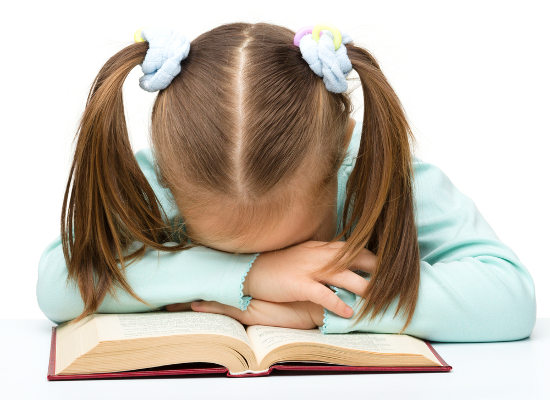Pediatric Sleep Apnea

Sleep is vital for a child 's health and overall development, learning and safety. A lack of sleep can impair a child 's performance in the classroom, stunt physical abilities, shorten attention span, and hinder social growth. The National Institutes of Health conservatively estimates that between 30-40 % of children do not get enough sleep. Furthermore, children's daytime behaviors are often related to their sleep habits. Children with sleep disorders may appear sleepy or tired during the day, or they may have difficulty awakening in the morning. Does your child get enough sleep? Are you ever concerned about the quality of the sleep they receive?
Watch this incredible story and how sleep apnea, snoring and other sleep issues can affect a child.
Does your child have any of the following warning signs?
- Snoring or “squeaking ” during sleep
- Appearing to have difficulty breathing during sleep
- Restlessness during sleep
- Mouth breathing during sleep
- Daytime hyperactivity or being irritable, agitated, or cranky
- Difficulty awakening in the morning
- Appearing sleepy in the day, or falling asleep in the day
- Poor school performance
- Obesity
- Bed wetting
It 's possible that your child may have obstructive sleep apnea. Obstructive sleep apnea (OSA) syndrome is characterized by episodic upper airway obstruction that occurs during sleep. The airway obstruction may be complete or partial and results in periods of hypoxia (decrease in the amount of oxygen in the blood), intermittent hypercapnia (increase in levels of carbon dioxide in the blood) and fragmented sleep. Just like adult OSA, the body responds to the need for more oxygen, with an adrenaline burst to arouse the child to wake and breathe deeply. Enlarged tonsils and adenoids are the most common physical problem causing sleep apnea in children. Obesity, nasal allergies, asthma, GERD (gastric esophageal reflux disorder), and medical and neurological conditions may contribute to sleep apnea, as well.
Obesity affects as much as 30% of all adolescents. In obese children, the tonsils often become enlarged due to fatty tissues in the upper airway. Fat deposits in the neck and chest also add to the collapsibility of the upper airway during sleep. It's not just the excess weight that increases the likelihood of obstructive sleep apnea, but having sleep apnea increases the risks of gaining weight. Researchers have found when patients are sleep deprived (a sufficient lack of restorative sleep over a cumulative period) hormonal changes can occur in the blood. Leptin, which acts on the brain to make people feel “full” is decreased while the hormone ghrelin, which makes people feel hungry, is dramatically increased. These hormonal changes cause patients to feel hungrier and eat more during the day.
Many of those overweight adolescents are experiencing diseases which were once known only to adults. During their routine medical examinations, pediatricians are seeing signs of high blood pressure, pulmonary hypertension, heart disease, congestive heart failure, diabetes, and gastro-intestinal disorders. When these conditions manifest early in life, they have the potential to severely alter their long-term health.
If you suspect your child has obstructive sleep apnea, consult with their physician then their dentist. Obstructive sleep apnea is easy to diagnose with an overnight sleep test and early treatment can result in a longer and healthier life for your child.
Treatment options for children include:
- Tonsillectomy and adenoidectomy
- Orthodontic expansion to widen the upper airway
- Oral appliance therapy (mandibular advancement to open the airway)
- Weight loss/ control program for overweight adolescents
- CPAP (Continuous Positive Airway Pressure)
With effective treatment your child's symptoms can improve dramatically.